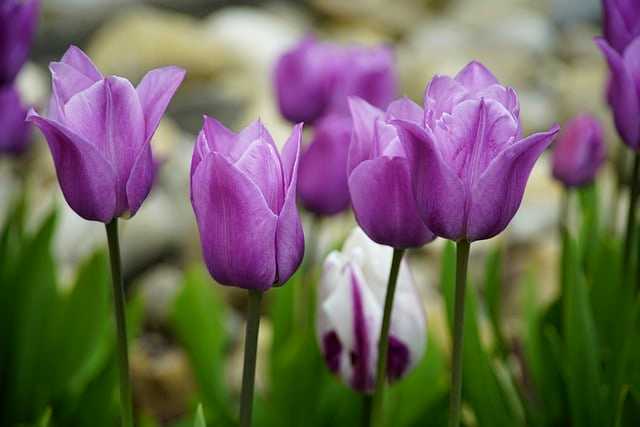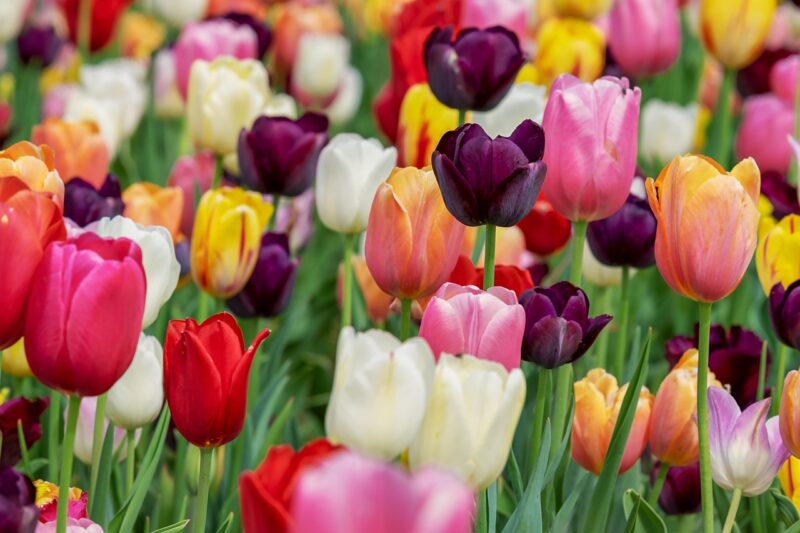tulips need full sun? This blog post digs deep into the sunlight requirements of tulips, exploring their optimal growing conditions, sun exposure preferences, and helpful gardening tips for cultivating these magnificent blooms.
The Sunlight Needs of Tulips

When discussing the sunlight requirements of tulips, the straightforward answer is yes, they do need sun—but it’s a bit more nuanced than that. Tulips thrive best under full sun conditions, which are defined as receiving at least six hours of direct sunlight each day.
However, not all types or varieties of tulips are created equal in how they respond to sunlight. Most tulips flourish in bright, direct sunlight, which enables them to produce robust foliage and vibrant blooms. Full sun exposure promotes the essential photosynthesis process, allowing the plants to convert sunlight into energy effectively, thus leading to healthier blooms.
The Importance of Sunlight in Bulb Development
Tulip bulbs, like many flowering bulbs, require adequate sunlight for development. The energy that sunlight provides is crucial during the growing season. When tulips receive sufficient sunlight, the bulbs store energy and nutrients, ensuring they will return each year with vitality. Insufficient sunlight can result in weaker stems, smaller blooms, and a lack of vigor that may compromise the plant’s overall health and flower output.
The Role of Soil and Drainage

While tulips do require full sun, it’s important to also consider the interplay between light and other environmental factors, particularly soil conditions and drainage. Tulips prefer well-draining soil with a mixture of organic matter, such as compost. Good drainage is crucial because, although these plants enjoy sun, they do not fare well in overly moist soil, which may retain excess water.
Waterlogged conditions can suffocate the bulb and lead to rot, turning your enticing garden of tulips into a swamp-like shell of what it could be. In poorly drained areas, even with complete sun exposure, tulips may struggle to thrive.
Enhancing Sunlight Exposure through Planning
To ensure optimal sunlight exposure for tulips, plan their placement carefully. Choosing the right location involves considering nearby structures, trees, and shrubs that may cast shadows at various times throughout the day. Raised beds or containers can be effective solutions for ensuring your tulips receive the sunlight they crave.
If you are gardening in a space where trees or buildings may block sunlight, it’s essential to evaluate the direction of the sun, especially during key growing months. Position your tulips in a location that receives abundant sunlight from early morning until late afternoon for the best results.
Varieties of Tulips and Their Sunlight Preferences

While tulips generally prefer full sun, it’s beneficial to understand that specific varieties may demonstrate slightly different preferences. For instance:
Darwin Hybrid Tulips: Known for their hardiness and ability to withstand various climates, Darwin Hybrids thrive in full sun and can often tolerate slight shade. They are particularly resilient and offer excellent blooms each year.
Triumph Tulips: These tulips do well in full sun, but they can also manage with partial shade. Their compact growth makes them a favorite among gardeners looking for versatility in flower placement.
Parrot Tulips: With their unique feathered petals, Parrot Tulips love the sun and flourish when planted in bright locations. Morning sun is particularly beneficial to enhance their coloration.
Understanding the specific needs of the tulip variety you wish to grow can help ensure you place them in well-suited locations within your garden. Be mindful that while some tulips can tolerate a bit of shade, more intense exposure will ensure the best flower production.
Tulips and Climate: How It Affects Sunlight Requirements
The climate of your region plays a pivotal role in the sunlight needs of your tulips. In areas with extreme heat, such as regions in the southern United States, tulips may benefit from a bit of afternoon shade. In contrast, areas with cooler climates might allow the tulips to absorb as much sunlight as possible.
In hot regions, midday sun can stress tulip plants, potentially leading to wilting or sunburned petals. Conversely, areas that have longer daylight periods in spring can provide ample opportunity for tulips to recharge through sunlight during early growing seasons.
Adjusting for Seasonal Changes
As the seasons transition, so too do the amounts of sunlight available. The early spring days often provide a different quality of light than later months. As blooming tulips begin to flourish in late March and early April, it becomes essential to monitor how they respond to changing sun patterns.
If you notice that your tulips are becoming leggy or leaning, this may be a signal that they’re not receiving adequate light. Measures can be taken to reposition them or remove nearby obstructions that limit direct sun exposure.
Watering and Fertilization Considerations

In addition to sunlight and soil conditions, careful attention must also be devoted to watering and fertilization when cultivating tulips. These elements are intertwined with how effectively your tulips can utilize sunlight.
Tulips enjoy moist conditions, but it’s vital to ensure that their growing area does not become soggy. Create a watering routine that aligns with the sun’s intensity—during hotter periods, you may find the need to increase watering frequency while ensuring that excess water drains away effectively.
Fertilization can further enhance the effectiveness of sunlight. A balanced, low-nitrogen fertilizer applied during the growing season can help ensure your tulips receive the nutrients they need to convert sunlight into energy without promoting excessive foliage growth at the expense of blooms.
Compensating for Less Than Ideal Sunlight Conditions

If you find yourself in a position where your tulips cannot access full sun due to shaded garden conditions, all is not lost. There are several tricks that you can employ to compensate for less than ideal light.
Select Shade-Tolerant Varieties: Some varieties, like certain Triumph or Fosteriana tulips, manage in partial shade and can still bloom satisfactorily even with limited sunlight.
Utilize Companion Plants: Pairing tulips with plants that flourish in shade can help make the garden bed more appealing and may provide indirect light for the tulips.
Adjusting Plant Height: When planting in a mixed flower bed, consider the heights of surrounding plants. By placing taller plants or those that grow later in the season farther back, you can reduce shading over tulips that bloom earlier.
The Impact of Overcast Days and Seasonal Variability
Another consideration for gardeners is the impact of weather conditions on sunlight availability. Overcast days common in spring can diminish the amount of light reaching the tulips. The good news is that tulips are resilient and can cope well with fluctuations in light levels.
While direct sunlight is critical, tulips can still bloom successfully on overcast days or with intermittent shaded periods. It’s essential, however, to assess the overall health of your plants after a series of cloudy days; if the tulips appear weak or their stems are leaning, it may indicate a need for adjusted care.
Final Thoughts on Caring for Tulips
Caring for tulips goes far beyond simply meeting their sunlight needs. From careful planning of planting locations to managing soil conditions and water supply, a multifaceted approach ensures you can enjoy the full beauty of tulips in bloom. While these flowers thrive in full sun, they can be quite forgiving and adaptable when given the right conditions.
In summary, tulips do indeed need full sun to thrive, but understanding their specific needs, considering varieties, and creating optimal growing conditions can transform your garden into a veritable tulip paradise.





